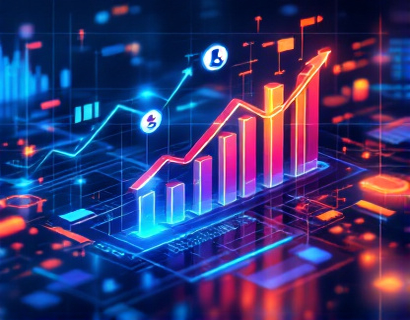Advanced Graphing Software: A Catalyst for Business Growth Through Intuitive Data Visualization
In today's data-driven world, businesses are inundated with vast amounts of information. The ability to transform this data into actionable insights is crucial for making informed decisions and driving growth. Advanced graphing software plays a pivotal role in this process by providing intuitive data visualization tools that simplify complex data sets. This article delves into how such software empowers business leaders and analysts, enhancing productivity and strategic planning.
The Importance of Data Visualization in Business Intelligence
Data visualization is not just a luxury but a necessity for modern businesses. It allows organizations to interpret and present data in a way that is easily digestible. Traditional spreadsheets and raw data tables can be overwhelming and time-consuming to analyze. Advanced graphing software bridges this gap by converting intricate data into visual representations such as charts, graphs, and dashboards. These visual tools facilitate quicker understanding and better decision-making.
Business Intelligence (BI) systems rely heavily on data visualization to provide insights that can lead to competitive advantages. By integrating advanced graphing capabilities, BI platforms enable users to explore data from multiple angles, identify trends, and predict future scenarios. This level of insight is invaluable for businesses aiming to stay ahead in their respective markets.
Key Features of Advanced Graphing Software
Advanced graphing software offers a suite of features designed to cater to the diverse needs of businesses. Some of the most significant features include:
- Interactive Dashboards: These allow users to create customizable views that display key performance indicators (KPIs) and other important metrics in real-time.
- Multi-Dimensional Data Analysis: The ability to analyze data from various dimensions helps in gaining a comprehensive understanding of business operations.
- Real-Time Data Updates: Ensuring that visualizations are always up-to-date is crucial for timely decision-making.
- Collaboration Tools: Sharing insights and dashboards with team members facilitates collective analysis and discussion.
- Advanced Chart Types: Beyond basic charts, advanced software offers specialized visualizations like heat maps, network diagrams, and 3D charts to cater to complex data sets.
These features collectively enhance the software's utility, making it an indispensable tool for businesses of all sizes.
Enhancing Productivity with Intuitive Interfaces
One of the most significant advantages of advanced graphing software is its user-friendly interface. Intuitive design ensures that users, regardless of their technical expertise, can navigate the platform with ease. This accessibility reduces the learning curve and allows business professionals to focus on analysis rather than struggling with the software.
Drag-and-drop functionality, pre-built templates, and guided tutorials further simplify the process. Users can quickly create professional-looking visualizations without extensive training. This efficiency translates to saved time and increased productivity, allowing businesses to achieve more with less effort.
Strategic Planning and Forecasting
Advanced graphing software is not only useful for analyzing past data but also for strategic planning and forecasting future trends. By leveraging historical data and predictive analytics, businesses can make informed decisions about resource allocation, market entry, and expansion strategies.
For instance, time series analysis can help predict sales trends, enabling companies to adjust their inventory and production plans accordingly. Scenario analysis allows businesses to model different "what-if" situations, providing a clearer picture of potential outcomes. This foresight is invaluable for crafting robust business strategies that account for various possibilities.
Visualizing Big Data
The volume of data generated by businesses today is staggering. Traditional methods of data analysis often fall short when dealing with big data. Advanced graphing software is equipped to handle large datasets efficiently. It employs sophisticated algorithms and data processing techniques to manage and visualize big data without compromising performance.
Data visualization tools can break down big data into manageable chunks, highlighting patterns and correlations that might otherwise go unnoticed. This capability is particularly useful for businesses in data-intensive industries such as finance, healthcare, and e-commerce, where insights derived from big data can lead to significant innovations and improvements.
Integration with Other Business Tools
Modern advanced graphing software is designed to integrate seamlessly with other business tools and platforms. This interoperability ensures a smooth workflow and enhances the overall value of the software. For example, integration with CRM systems, ERP systems, and marketing automation tools allows for a unified view of business operations.
Users can import data directly from these sources, reducing the need for manual data entry and minimizing errors. This integration also enables real-time updates across all connected systems, ensuring that everyone in the organization has access to the most current information.
Customization and Personalization
Every business is unique, and advanced graphing software recognizes this by offering extensive customization options. Users can tailor visualizations to suit their specific needs, choosing from a wide range of colors, fonts, and layout options. This personalization ensures that the visualizations not only look professional but also align with the brand identity of the organization.
Custom dashboards can be created to focus on the most relevant metrics for different departments or teams. This level of customization ensures that each user sees the information that matters most to their role, improving focus and decision-making.
Case Studies: Real-World Applications
To better understand the impact of advanced graphing software, let's look at a few real-world applications:
- A retail company used interactive dashboards to monitor sales performance across different regions and product categories. The visual insights helped identify underperforming areas, leading to targeted marketing campaigns and increased sales.
- A financial institution implemented advanced graphing tools to analyze customer transaction data. The ability to visualize complex financial patterns enabled the institution to detect fraudulent activities more effectively and enhance security measures.
- A manufacturing firm utilized time series analysis to optimize production schedules based on demand forecasts. This strategic adjustment reduced downtime and improved overall efficiency.
These examples demonstrate how advanced graphing software can drive tangible results across various industries.
Challenges and Considerations
While the benefits of advanced graphing software are clear, there are some challenges and considerations to keep in mind:
- Data Quality: The accuracy and reliability of visualizations depend on the quality of the underlying data. Ensuring clean and consistent data is crucial.
- User Training: Even with intuitive interfaces, some level of training may be necessary to fully leverage the software's capabilities.
- Scalability: As businesses grow, the software must scale to handle increasing data volumes and complexity.
- Security: Protecting sensitive data is paramount. Advanced graphing software should comply with industry standards for data security and privacy.
Addressing these challenges proactively can help organizations maximize the benefits of advanced graphing software.
Conclusion
Advanced graphing software is a powerful tool that transforms complex data into actionable insights. By enhancing productivity, facilitating strategic planning, and enabling real-time analysis, it plays a vital role in driving business growth. As data continues to shape the future of business, investing in intuitive and robust data visualization solutions becomes increasingly important. Organizations that embrace these tools position themselves for success in an ever-competitive landscape.











































